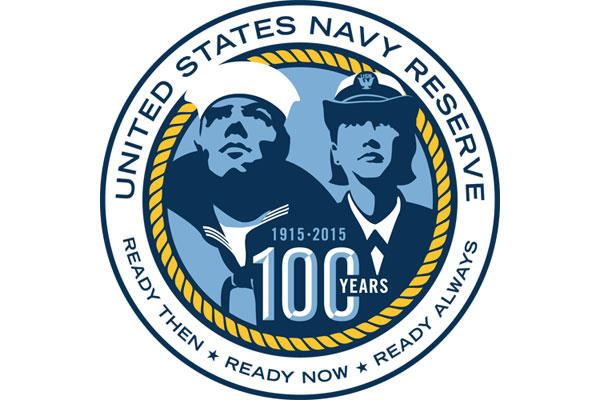PEARL HARBOR -- Civilians, active duty and Reserve Sailors gathered at the historic Battleship Missouri Memorial on Ford Island, Joint Base Pearl Harbor-Hickam March 11 for the Navy Reserve Centennial Commemoration (NRCC).
For 100 years, young men and women from across the U.S. have stepped forward to answer the nation's call to action and volunteer their service to theU.S. Navy Reserve during times of war and peace. To remember the sacrifices those Sailors have made over the past century, the NRCC celebrated the Navy Reserve's rich history, the Navy and all the families that have supported their Sailor's service to country.
Following the parading of the colors and the invocation, Rear Adm. Alma Grocki, director of Fleet Maintenance U.S. Pacific Fleet, and 27-year Navy Reservist, delivered the ceremony's opening remarks, commending Navy Reserve Sailors for being, "ready then, ready now and ready always."
"This is a proud time for us as we celebrate an enduring legacy of Sailors who have served their country during times of war and peace, in every conflict since World War I," said Grocki.
"Although the Navy Reserve Force has varied in size over the years from the initial 8,000 Sailors at the start of World War I, to a high of 3,400,000 during World War II, we have been a force that our country could always rely on," said Grocki. "Even in times of peace, we trained, honed our skills and ensured we were 'mobilization ready' to go whenever and wherever we were needed - ready then, ready now, ready always."
Guest speaker for the event, Assistant Secretary of the Navy (Manpower and Reserve Affairs) Juan M. Garcia III, spoke of the strategic importance Naval Reserve Units and Sailors have played in past conflicts, and most significantly, in Iraq and Afghanistan.
"Since the towers came down, more than 52,000 Navy Reservists have been mobilized to serve in Iraq and Afghanistan," said Garcia. "More than 8,000 have done multiple combat tours. 70,000 in total have supported contingency operations around the world."
According to Garcia, Reserve units and Sailors have participated in a wide array of missions in Iraq and Afghanistan that have revolutionized the rules of warfare, from providing combat life and rescue support to SEAL (Sea Air Land, Sea) and SWCC (Special Warfare Combatant-Craft Crewmen) teams, to administering medical care to those injured in combat.
"In World War II, for every 100 combat injuries, 68 were fatal," said Garcia. "In Vietnam, for every 100 combat injuries, 28 were fatal. Over the last decade-and-a-half, in Iraq and Afghanistan, for every 100 combat injuries, only six were fatal. That's a tribute to reserve doctors, nurses and corpsman...it's changed the face of warfare and is a follow up to the reality that we're bringing folks back home alive."
"The performance of Navy Reservists in Iraq and Afghanistan has convinced all that this operation capability should not be placed back on the proverbial ship. It's one team, one fight," said Garcia. "Congratulations shipmates, you're a part of an incredible tradition - here's to the next hundred years."
After Garcia's remarks, Hawaii State Representative Bob McDermott, presented the Hawaii State Proclamation to staff from the Navy Operational Support Center (NOSC) Pearl Harbor.
"This is on behalf of the state of Hawaii, to say 'thank you' to the Naval Reserve for what you do. You make our community better," said McDermott.
At the conclusion of the ceremony, Garcia was joined by NOSC Pearl Harbor's youngest Sailor, Yeoman Seaman Elliot Dixon, for a ceremonious cake-cutting event.
After the ceremony, Dixon said he felt proud to be a part of the Navy Reserve's rich history and heritage.
"I didn't realize the Navy Reserve played such a large role in World War II and throughout the Navy's other activities," said Dixon. "Hearing that makes me feel proud, like I'm a part of something a lot bigger than myself."
Established on March 3, 1915, the Federal Naval Reserve originally only allowed Navy veterans to enroll into the program. However, on Aug. 29, 1916, with the prospect of America's entry into World War I looming, the Navy Reserve reorganized to allow the enrollment of non-veterans and designated as the U.S. Naval Reserve Force.
During World War II, the Navy Reserve contributed 84 percent of the Navy's manpower. Navy Reserve Sailors in World War II included five future U.S. Presidents and 15 recipients of the Medal of Honor.
Navy Reserve Sailors have been deployed to and been a part of every conflict since World War I, working alongside active duty personnel to secure theNavy's mission and protect the nation's freedom.
Today, at least 20,000 Navy Reserve Sailors, or about one-third of the Navy's Reserve Component, are providing fully integrated global operational support to the fleet and combatant commanders.


























